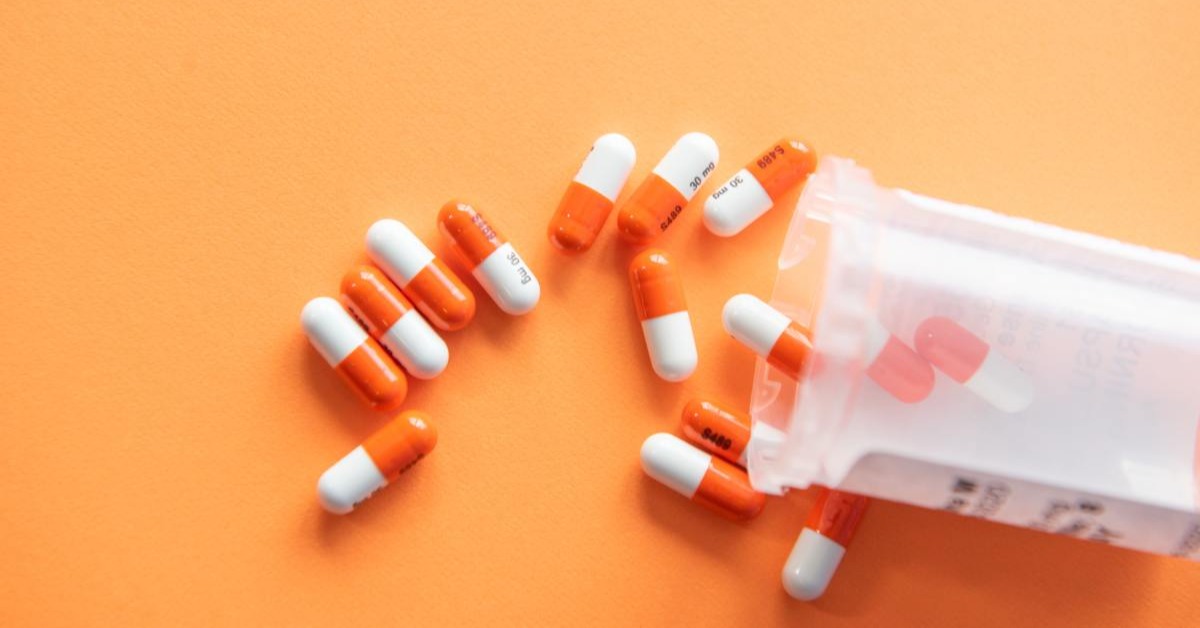
What is a 6-Year BS/PharmD Program?
Becoming a pharmacist requires a good deal of schooling: a [...]

According to a Lowin Institute report, “More than four in ten older adults take five or more prescription medications a day” and “nearly 20 percent take ten drugs or more.” It’s not just older Americans, though; one in ten Americans of all ages has taken five or more unique prescription drugs in the last 30 days, according to government data. Without question, pharmaceuticals are big business and getting bigger: sales increase by roughly five percent every year. All of which suggests that the demand for pharamcists won’t abate any time soon.
If you want to join their ranks, you’ll need a Doctor of Pharmacy (PharmD) degree. PharmD programs combine experiential education with lab and classroom work to deliver a doctoral-level professional credential. As a PharmD candidate, you’ll gain practical experience through clinical rotations while working alongside pharmacists. These programs are rigorous; applicants typically need to prove themselves in advanced undergraduate science coursework beyond general chemistry and freshman biology.
Perhaps you’re wondering am I qualified for a Doctor of Pharmacy degree program? This article can provide answers. It addresses:
PharmD programs include coursework and clinical rotations to train students for pharmacological careers; they also position graduates to specialize through additional education. PharmD curricula deliver both the theory and practical skills needed to succeed. Students in the Butler University program, for example, learn techniques like drug therapy and the pharmaceutical and biomedical science behind it.
These programs may differ in some details, but all prepare graduates to sit for the North American Pharmacist Licensure Examination (NAPLEX). A passing score on the exam means you can acquire pharmaceutical licensure in every state, though certain ones (like Florida) require additional certification. Typically, PharmD degrees take four years. Shorter options are available; the University of California – San Francisco program is only three years, though you’ll need to take courses over the summer to complete the program on the abbreviated timetable.
The prerequisites for most PharmD programs are demanding. If your undergraduate school has a pre-pharmacy track, that can simplify things. If not, expect to prove competency in several high-level courses like organic chemistry and calculus. You may need to meet a minimum undergraduate GPA, as well—frequently 2.75 or above.
One way to ensure enrollment in a PharmD program is to undertake an American Association of Colleges of Pharmacy-approved 0-6/7 programs (for the number of years you’ll spend). These programs accept students out of high school. You’ll complete prerequisite courses, including humanities subjects, in your first few academic years, then go on to earn a dual bachelor’s degree and PharmD over the final years of the program. Students entering the program this way can bypass some science requirements, since they will fulfill them at the college level.
This section utilizes the information about top programs to provide an overview of the degree. Be sure to research the specifics of your desired school before applying, given that programs differ in some details.
Expect to submit letters of recommendation, a resume, your undergraduate transcript, and a personal essay to any graduate program you apply to, including a PharmD. Schools typically require standardized test scores as well, but you won’t be completing the GRE or GMAT for a Doctor of Pharmacy. Instead, you’ll take the Pharmacy College Admissions Test (PCAT). Note that more schools, including pharmacy programs transitioning to test-optional policies. The University of Florida is among those schools that don’t require the PCAT.
While some programs, including the University of North Carolina at Chapel Hill, accept applications from recent undergraduates, most prefer relevant work experience. Even UNC recommends that students spend time either working in the healthcare field or in research.
Wherever you apply, expect to prove that you completed prerequisite coursework in hard sciences. Prerequisite coursework for the University of Florida includes chemistry, biological sciences, anatomy and physiology, and mathematics.
All PharmD curricula cover pharmacology topics, including drug therapy, drug chemistry, and patient care. All also offer their students experiential learning opportunities. However, individual schools can emphasize different areas. For instance, students at UNC start gaining professional experience after their first year. In contrast, University of Minnesota – Duluth students spend most of their time in the lab or classroom until the fourth year.
Not all PharmD programs accommodate academic specializations. However, most offer electives, which can be a great way to create personalized areas of expertise. The University of Michigan – Ann Arbor requires students to complete six credits worth of electives to graduate “to provide flexibility in the curriculum to allow students to explore areas of interest specific to their professional growth.”
Students can specialize through a residency or fellowship after completing their PharmD. In a residency, you’ll be able to choose a specialization, such as geriatrics, oncology, and infectious diseases. In a fellowship, you’ll focus on research, which can potentially lead to jobs developing or testing drugs.
According to US News & World Report rankings, top Doctor of Pharmacy programs include the following schools.
University of Florida offers its PharmD program at three campuses: Gainesville, Jacksonville, and Orlando. The program connects students and faculty across campuses with videoconferencing.
The UNC pharmacy program boasts the highest match-rate for residency programs with 50 or more applicants. According to a school press release, 75.5 percent of first-year students who applied for a residency were matched, about 12 points higher than the national average. These figures highlight how students in the UNC program gain a considerable amount of professional experience through the program. They also can specialize in rural pharmacy, global pharmacy, and pharmacy research.
The University of Michigan boasts an excellent student-to-faculty ratio of 4:1. The program reports that “98 percent of alumni from the Class of 2020 said they would choose UM College of Pharmacy for their education if they were to do it again” and 80 percent were satisfied with their careers post-graduation. A majority of students (61 percent) in this top five program pursue a residency. Fellowships and community pharmacy jobs are the next most common career choices.
Many schools launched online programs in recent years; a trend that has only increased as schools were forced to go virtual during the pandemic. Here are two programs dedicated to providing distance learning opportunities.
Butler University launches its hypbrid Doctor of Pharamcy program in the Fall of 2022. This full-time, four-year program will include three campus immersions in Indianapolis; otherwise, the program can be completed remotely. US News & World Report ranks Butler’s on-campus PharmD program among the nation’s top 50.
Creighton has offered a distance learning option since 2001. Students communicate with faculty and each other through video conferencing, email, and phone calls; they take both live and asynchronous classes. Lab classes take place on campus over the summer, but, according to the school website, “Sites for clinical rotations are available in a variety of locations throughout the country and internationally.”
Offered through the Wegmans School of Pharmacy, this “clinically oriented hybrid PharmD pathway provides n experiential, student-centered approach to education with clinical rotations and medical outreach opportunities.” It’s the first of its kind offered in New York. Pharmacy students travel to campus to complete immersions, but acquire patient care experience at their local pharmacies. As a Catholic university, St. John Fisher College emphasizes service as part of the admissions process and pharmacy student experience.
There are many potential career paths for these healthcare providers, including traditional pharmacy practice jobs, at private companies and in the federal government. This section won’t focus on research positions, given those are more common for PhD students. That said, completing a post-PharmD fellowship can launch a research-oriented career. You may perform clinical trials for drug companies, conduct research and development, or evaluate drug safety.
Pharmacy professionals can earn high salaries working in the private sector. For instance, medical science liaisons utilize their science background to identify which drugs are best to sell; they earn an average base salary of $157,092, according to Glassdoor.
The median annual wage for all pharmacists is $128,710, according to the United States Bureau of Labor Statistics (BLS). Remember, salary depends on numerous factors, including location. As a rule, urban pharmacists earn more than rural pharmacists.
The AACP states that community pharmacists make up 45 percent of the pharmacy workforce, making it the most common job title. These professionals work locally, including through chain and independent pharmacies. The BLS notes that pharmacists who work at pharmacies and drug stores earn a median annual wage of $125,740, while those at food and beverage stores earn $131,200. According to the BLS, the highest-paid pharmacists work in ambulatory healthcare services ($137,820) and for state, local, and private hospitals ($131,290).
Specializing through a residency can help you earn more, though it’s tough to pin down an exact number. According to The Board of Pharmacy Specialties, those with a specialty “enjoy rewards in salary, promotions and new practice opportunities.”
Finally, the federal government needs pharmacists to compound medication (mix and package it for medical facilities and individual professionals), advise manufacturing, and regulate pharmaceuticals. Depending on your experience and education, pharmacy professionals in the federal government can earn between $46,083 and $103,309, not including benefits. Having a Doctor of Pharmacy puts you at the higher end of the earning spectrum.
(Last Updated on February 26, 2024)
Questions or feedback? Email editor@noodle.com

Becoming a pharmacist requires a good deal of schooling: a [...]

All accredited Doctor of Pharmacy (PharmD) programs prepare their students [...]

Pharmacists may be the unsung heroes of patient healthcare, providing [...]
Categorized as: Medicine, Nursing & Healthcare